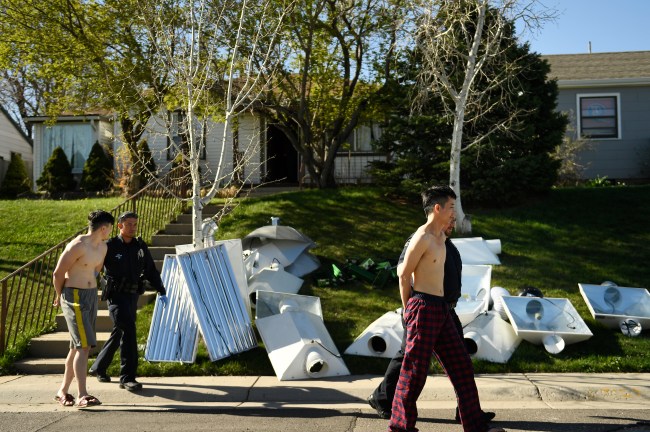
An 18 month long investigation by the Denver North Metro Drug Task Force, the DEA, U.S. Postal Inspectors and the Colorado Attorney General’s office culminated in a drug raid across the Denver area that took hours to execute, and required military vehicles from the National Guard in order to haul all the plants and equipment away.
Approximately 30 homes and warehouses were involved, bought up by growers from out of state with the express purpose of growing weed in Colorado and selling it elsewhere. More than 40 people were arrested in the sting Thursday morning, most of them believed to be from Texas. At one location near Colorado Springs, a person barricaded himself inside a building and law enforcement was forced to use tear gas to get him out.
What DEA agents pulled from an illegal grow in Denver. Source says several raids happened targeting pot trafficking pic.twitter.com/jjJ2WaOKOc
— Jason Gruenauer (@JGonTV) April 14, 2016
The plan, according to reports, was to grow the pot in Colorado and then ship it out of state where it could be sold for four times what it would sell for in-state. The suspects used the U.S. Postal Service to ship marijuana to other markets, as well as taking it across state lines in their own vehicles themselves. That’s what made the operation illegal, and now involves a multi-state investigation.
“I’m a little shocked that there’s still a market to grow pot illegally,” neighbor Rebecca Rattray told CBS News.
At one home there were 300 plants and it took hours to seize all the grow lamps, pot, and other paraphernalia from each location. The investigation is still ongoing with witnesses being interviewed and likely more search warrants to come. There have been multiple busts around the state lately according to the Denver Post, part of a crackdown on marijuana trafficking stemming from Colorado’s legalization of pot.
By law, without a license, a Colorado resident older than 21 may grow a maximum of six marijuana plants. No more than three of those can be mature at one time. In Denver city limits, you may only have twelve plants per household, regardless of how many residents are in the home.
(via Mashable)
